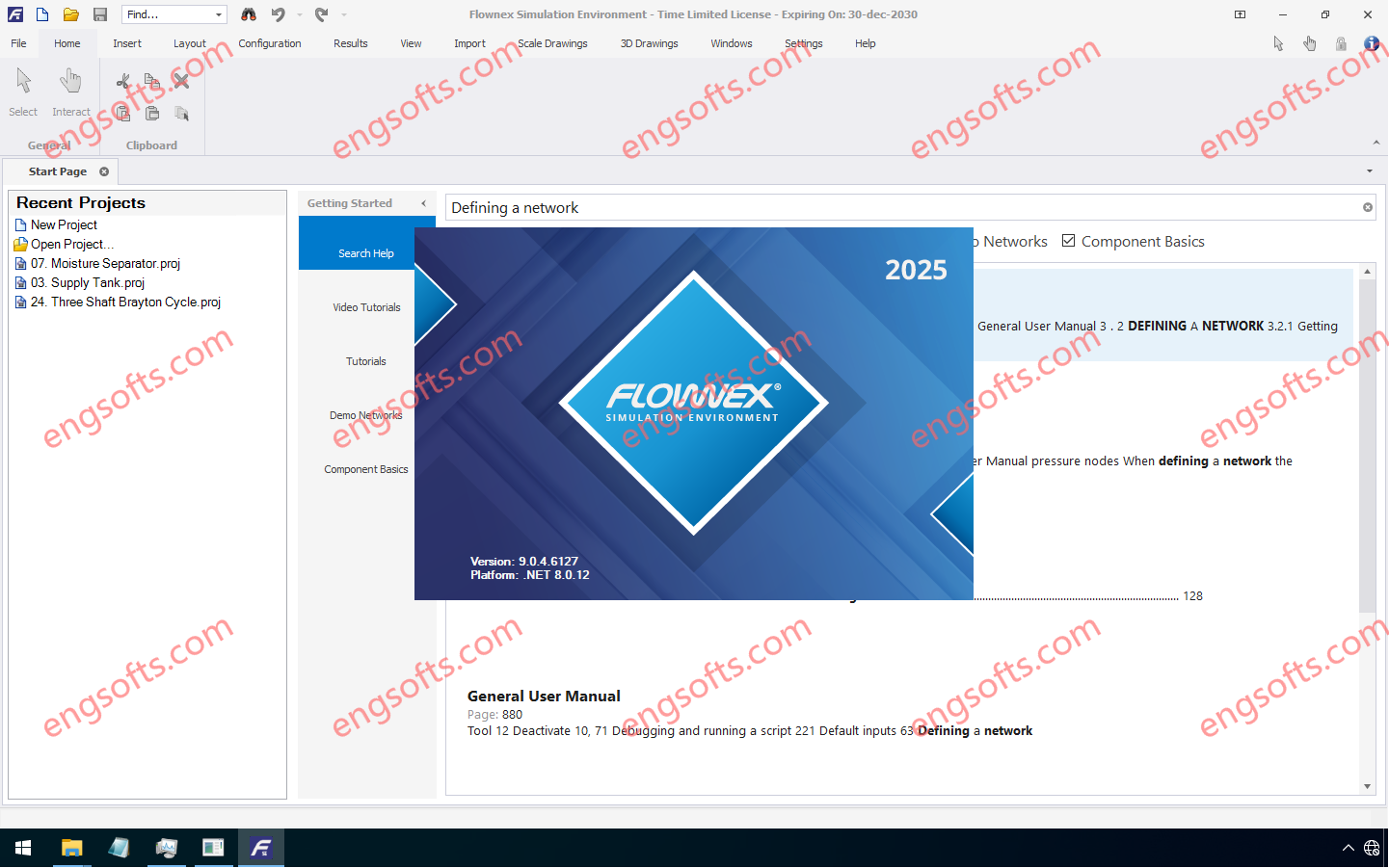Flownex Version 9.0.4 delivers a suite of major and minor enhancements that significantly advance the robustness and usability of its 1D simulation environment. Notable developments include dedicated Nuclear Reactor Components, the implementation of the Henry-Fauske Critical Two-Phase Flow model, extended Metadata functionality and an advanced Convergence Residual Plot for steady state simulations.
Available versions: 2025.x ,2024.x ,…
Flownex Simulation Environment 2025 R3 v9.0.4 Tested Picture
The complete Release Notes containing detailed descriptions of the enhancements in the Flownex SE Release 3 version 9.0.4 are available under the Help ribbon in the latest Flownex SE release.
Pebble Bed Reactor
A new Pebble Bed Reactor component has been added that allows a pebble bed reactor to be modelled more easily than using the reactor scripts from the previous Flownex version.
As part of this upgrade the old Pebble Bed Reactor component has been removed and the Nuclear Reactor component has been moved to a Legacy category. The geometry chart used for the new Pebble Bed Reactor has been streamlined and a point neutronics chart has been added to use in conjunction with the built-in component.
Pressurized Water Reactor
A Pressurized Water Reactor (PWR) component has been added to the Nuclear library as shown in Figure 1. The PWR is set up in the same manner as the Pebble Bed Reactor and uses both a geometry chart and a point kinetics chart. The reactor component allows for specifying the fuel element and control rod geometry and generates a network that includes fuel elements and coolant flow paths. A representative fuel element consists of a central fuel region, a gas gap, and cladding, whereas a representative control rod consists of central rod material, a fluid gap and the control rod guide tube.
The PWR leverages the existing point kinetic neutronics model that is extended to allow for the use of the water density in the moderator reactivity feedback. The power calculated by the point kinetic model is distributed in the core based on a specified power distribution and assigned to the solid nodes in the representative fuel element in each zone.
Legacy Category for Nuclear Components
The previous generation of nuclear components have been moved to Legacy categories. This has been done for both the components and the charts.
There are a variety of critical two-phase flow applications where the flow does not adhere to equilibrium conditions such as pressurized water released through a valve or in pipe burst accidents involving the transport of pressurized water. Applying equilibrium modelling principles to these applications may result in a severe underprediction or overprediction of critical mass flow rates. The Henry-Fauske model is a well-known benchmark for the calculation of critical two-phase flow associated with short tube break cavitating flow as it accounts for the delay in mass and heat transfer in the choking plane.
An option has been added to the Restrictor with Discharge Coefficient, Restrictor with Loss Coefficient and Secondary Loss component to specifically apply the Henry-Fauske frozen model instead of the conventional homogenous equilibrium approach. The option is available for two-phase fluid types when selecting the “Specify advanced inputs” option.
The capability has been added to specify metadata for several different items. These items include components, charts, compounds, and component defaults. The capability to add metadata provides users with a place to store relevant data for an item, for example drawings, calculations, notes etc. The option to add metadata is available within the context menu of an item and can be accessed when right-clicking on the item:
Within the Metadata Editor window, metadata can be added in the form of Text files, Word documents, Excel files, PDF files or images.
The “Add File” option can be used to add existing files and the “New” option can be used to add new blank files. The “Explore” option will open the location of the Metadata. Metadata is copied and exported with the items that they are associated with.
A Residuals plot has been added as a tab on the Flow Solver output window where the residuals are plotted as the network solves.
The Residuals plot is always active for steady state simulations and can optionally be enabled for transient simulations too. An option is also available to save the data to have the data available in a new session. It is however important to note that saving the data might take up a lot of disk space, especially in transient.
More enhancements in the Flownex SE Release 3 version 9.0.4.


 ID:softmed
ID:softmed ID:956575828
ID:956575828
Must log in before commenting!
Sign Up